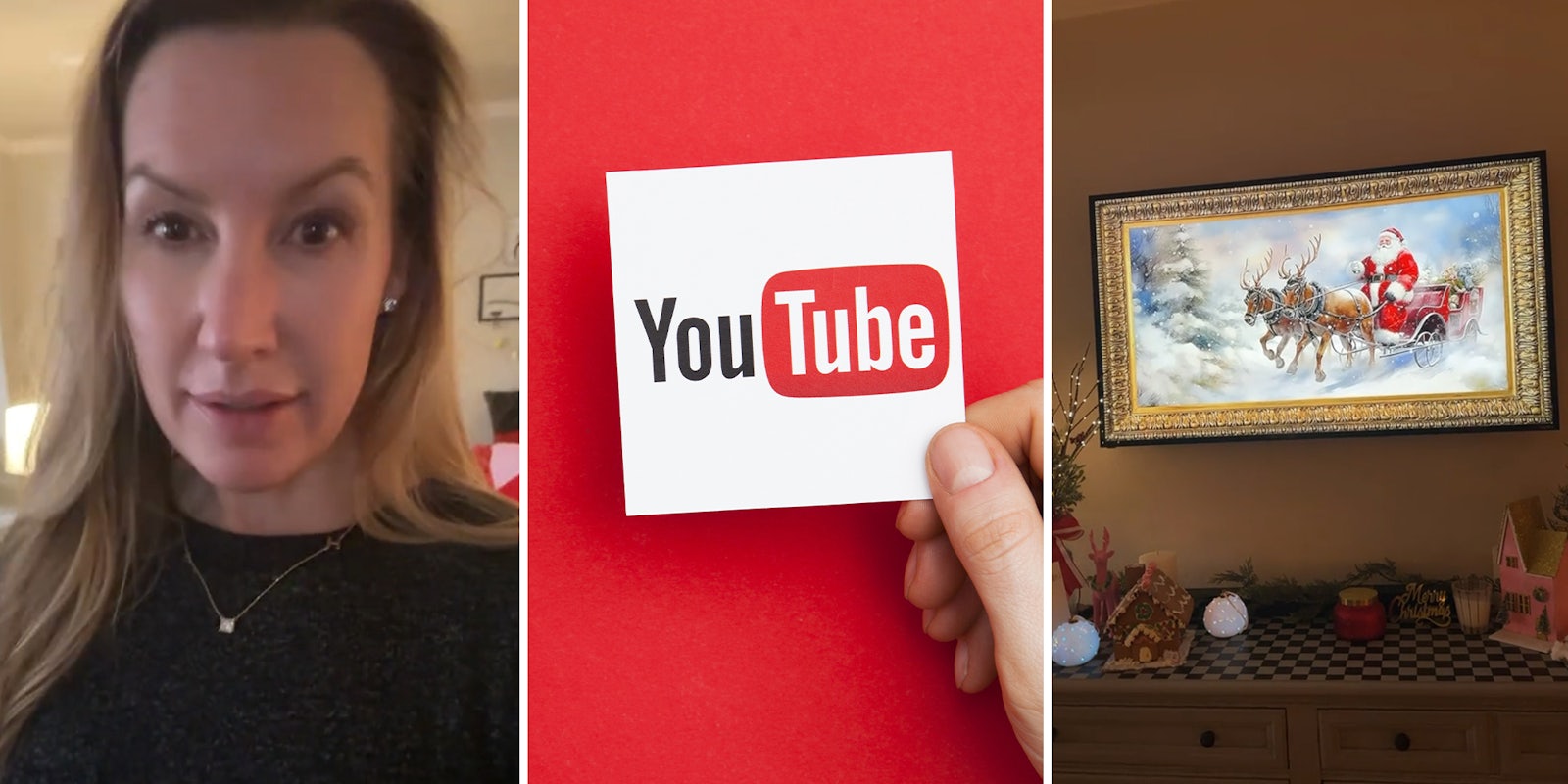If you’re looking for a way to spice up your living room with some festive flair, you might want to check out this viral TikTok hack that shows how you can turn your TV into a Christmas decoration with just a few clicks.
The video, posted by Heather (@heathernw77) on Dec. 21, has racked up over 4.9 million views. “OK, I did not know about this, let me see if you know about this,” she says in the video, before switching from selfie to the primary camera to film the TV.
As she’s tinkering with the TV settings and trying to open the YouTube app she says, “OK, Smart TV, this might take me a minute. We’re looking for YouTube TV, OK? And then we’re gonna go search. Already did it so it’s right there. We’re gonna search framed Christmas TV art guys, there’s so much of it but just wait, wait for this.”
The TV, which is mounted on the wall, now mimics a real framed picture, but with the added bonus of an animated element of snow and a soundtrack of festive tunes playing in the background.
@heathernw77 Why am I just now learning this 5 days before Christmas! Go try it! it. #youtube #framedtvart #framedtv #christmas #christmastv #merrychristmas ♬ original sound – Heather F
The comment section was filled with users thanking the TikToker for sharing the hack.
“Thanks for the tip. We are having a Christmas party tonight and I just converted the TV to a Christmas frame. Plus a bonus with the Christmas music,” one commenter said.
“Christmas art for TV…… I’m using it right now! What a fantastic surprise!” a second commenter chimed in.
“Thanks, have it playing now. Love the old fashioned Christmas music,” a third commenter wrote.
However, some tech-savvy individuals have raised concerns about potential issues with having a still frame on OLED TVs for prolonged periods of time. One user cautioned, “I would never do that on an OLED. Burn-in by the end of the holiday.”
As one article on the official Samsung website puts it, “Burn-in is a visible mark that is left on the screen and remains no matter what you are watching or doing. This may be caused by leaving a fixed image on the screen for a long period of time and can be particularly noticeable on OLED TVs.”
The Daily Dot reached out to Heather via TikTok direct messages for comment.


